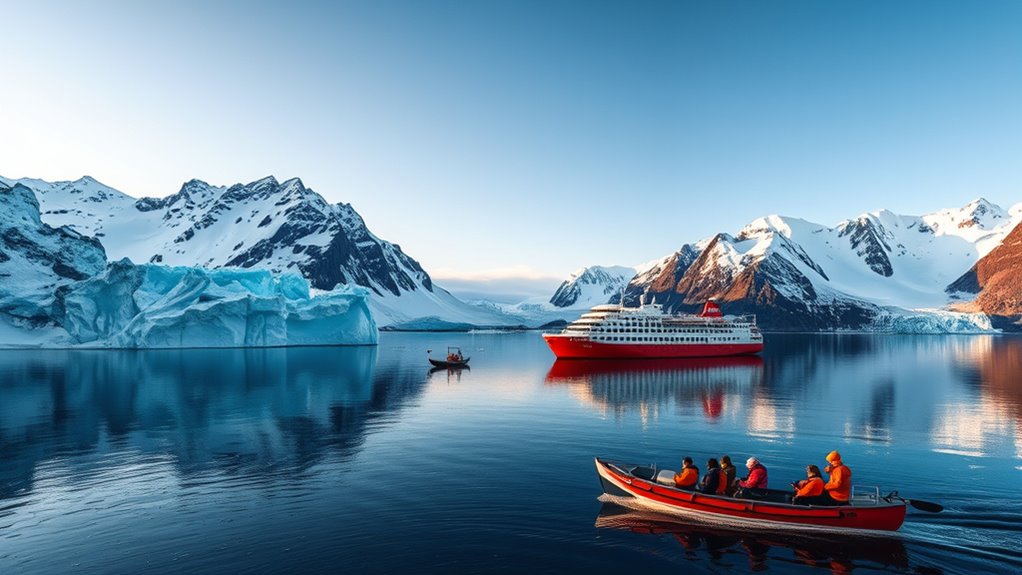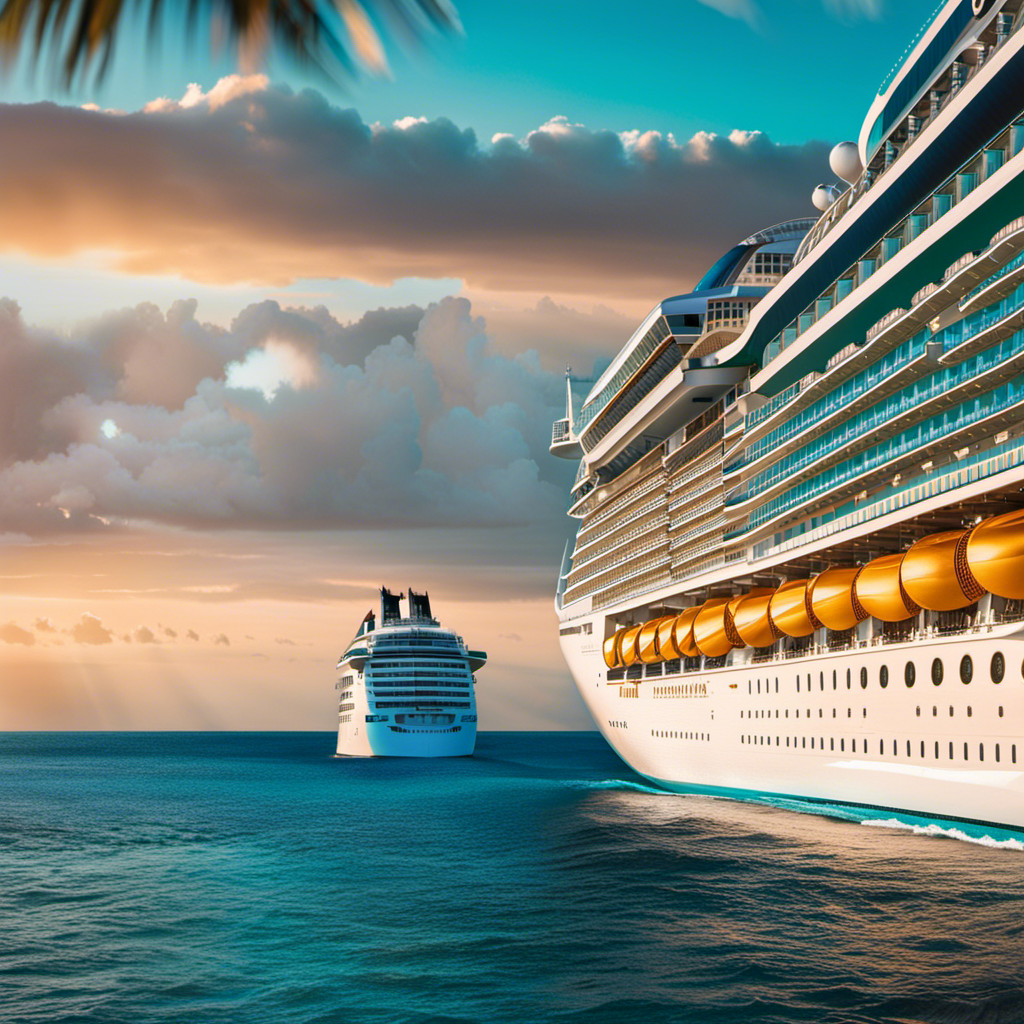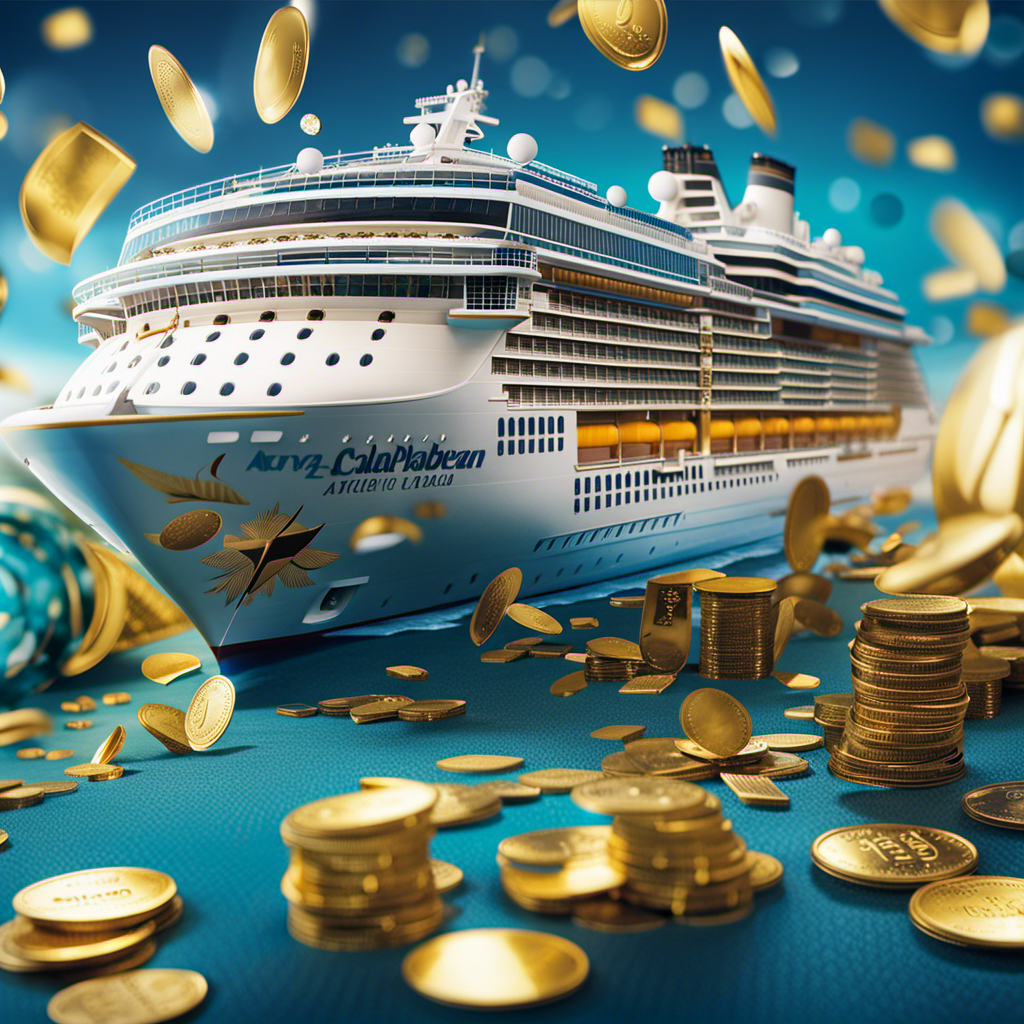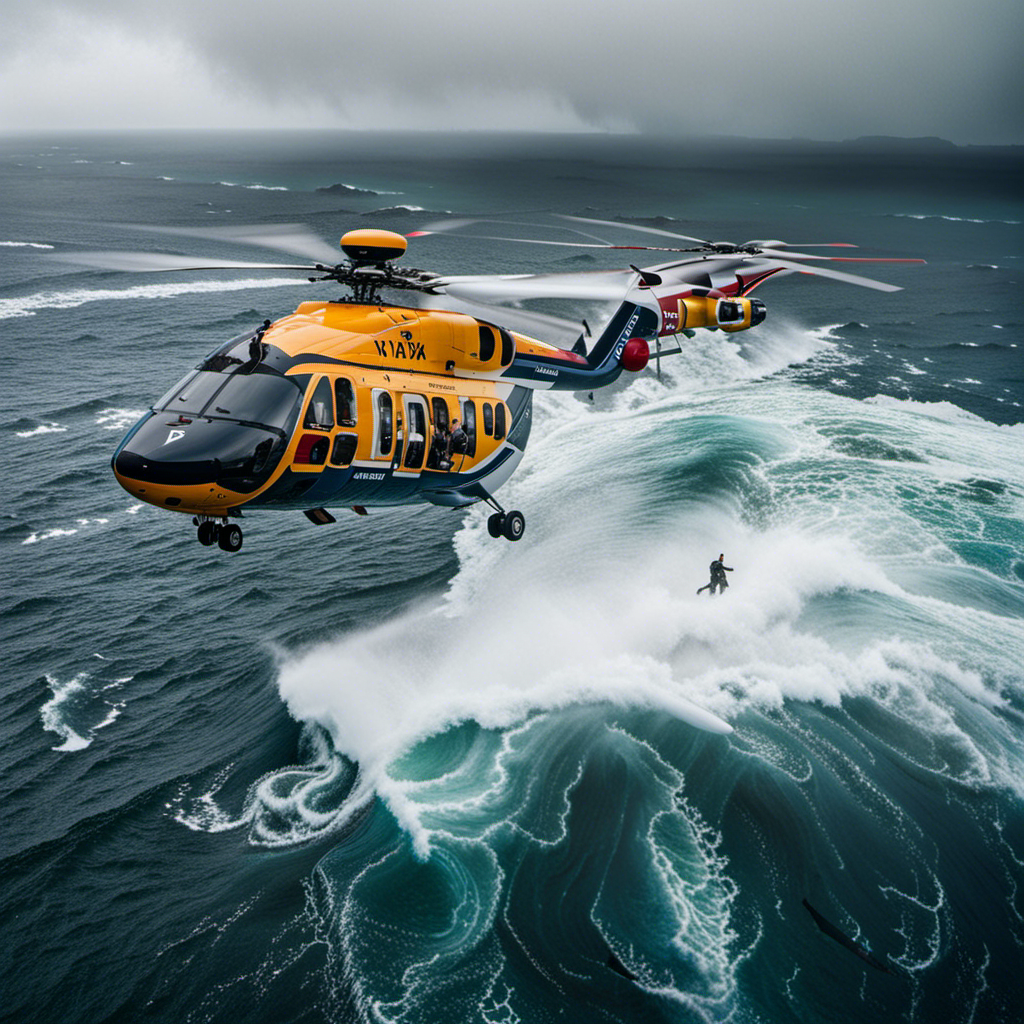In 2025, expedition cruises will take you to some of the world’s most remote and stunning destinations, with a growing fleet of innovative, eco-friendly ships designed for comfort and sustainability. Expect curated experiences in polar regions, Africa, and off-grid tropical locations, along with advanced safety features and wildlife encounters. Demand is high, so early bookings are recommended. Keep exploring to discover more about what makes this year’s voyages so extraordinary.
Key Takeaways
- Launch of over two dozen new ships with advanced designs prioritizing sustainability and passenger comfort.
- Increased itineraries to emerging destinations like Africa, Seychelles, and polar regions, offering unique wildlife encounters.
- Stricter environmental regulations and lower emission requirements, promoting eco-friendly fuels and waste management.
- Growing demand for polar and warm-water expeditions, often booked nine months in advance, reflecting high popularity.
- Enhanced safety and technological innovations ensure safer, more immersive exploration experiences in sensitive regions.
Growing Popularity of Expedition Itineraries
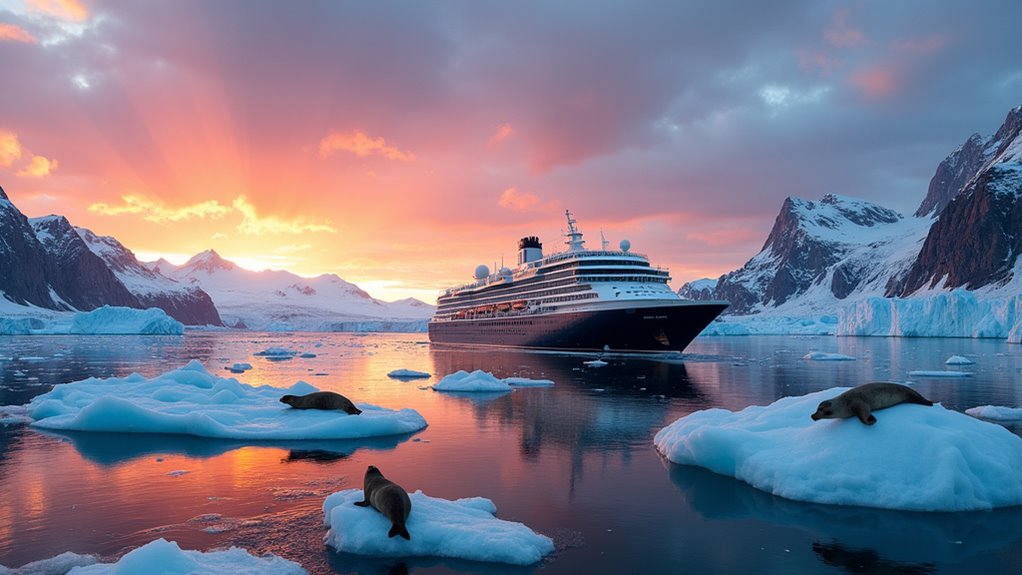
The popularity of expedition itineraries is soaring as more travelers seek unique and immersive experiences. You’ll notice a surge in demand for both polar and warm-water destinations, with travelers booking about nine months in advance. The Expedition Cruise Network highlights hotspots like Antarctica, Greenland, Alaska, the Galapagos, and Seychelles, reflecting this trend. The industry has rebounded strongly after the pandemic, with expedition cruises playing a key role in growth. Expect to see more trips to Greenland and Alaska, thanks to improved accessibility, including new airports. Additionally, new itineraries in Africa and collaborations with regions like Vanuatu are expanding options. Overall, the appeal lies in discovering remote areas and experiencing diverse wildlife, making expedition cruises increasingly attractive for adventurous travelers. The focus on authentic experiences continues to drive this growth, as travelers increasingly prioritize genuine interactions with nature and local cultures. Moreover, the emphasis on sustainable tourism is shaping the development of new itineraries, ensuring that this growth is environmentally responsible. Furthermore, advancements in technology and onboard facilities are enhancing passenger comfort and safety, encouraging more travelers to explore these remote destinations. As the industry evolves, the integration of energy-efficient solutions is becoming more common, helping to reduce environmental impact and promote eco-friendly travel. Coastal environments are also being incorporated into some itineraries, offering opportunities for wildlife watching and understanding coastal ecosystems firsthand.
Diverse Destinations and Unique Experiences
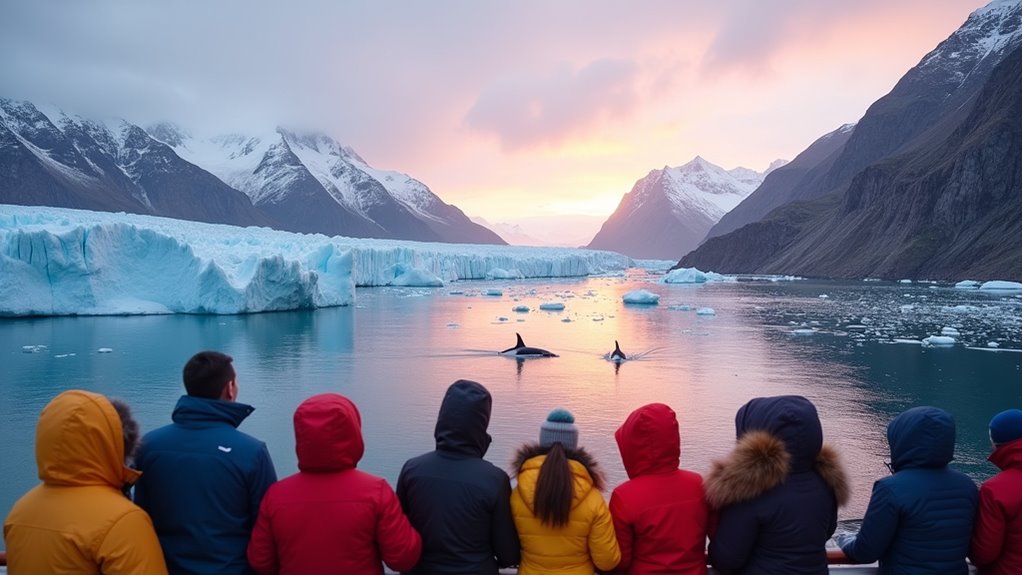
In 2025, expedition cruises take you to both polar regions and warm-weather destinations, offering a wide range of scenery and wildlife. You’ll experience rare landscapes like the icy Arctic or the lush Galapagos Islands, making each journey truly unique. These adventures provide scenic moments and encounters that are hard to find elsewhere, enriching your travel experience. Additionally, the greenhouse-inspired environment onboard enhances environmental awareness and sustainability efforts during your voyage. Properly maintaining your bicycle tires in storage can also contribute to a more sustainable approach to travel and exploration.
Polar and Warm-Weather Destinations
Beginning on expedition cruises in 2025 opens a world of diverse destinations and unforgettable experiences, whether you’re exploring polar icy domains or warm-weather biodiversity hotspots. In the polar regions, you’ll encounter Arctic adventures on Ponant’s luxury icebreaker Le Commandant Charcot and extensive Antarctic landings with G Adventures, offering close wildlife encounters with penguins, seals, and whales. Ships feature advanced ice class technology for safer navigation, often guided by experts and scientists for educational insights. Additionally, icebreaker ships are equipped with innovative technology to ensure safe passage through challenging icy waters, enhancing traveler confidence. These ships also incorporate mindfulness techniques, such as visualization and sound meditation, to help passengers relax amidst the icy wilderness. Moreover, the use of advanced safety features further assures travelers of their security during these polar explorations. The implementation of environmentally sustainable practices ensures that these expeditions minimize their ecological footprint while providing immersive experiences. Meanwhile, warm-weather destinations like the Galapagos, Raja Ampat, Patagonia, and North American Great Lakes provide rich biodiversity, scenic landscapes, and cultural insights. Many cruises emphasize sustainability, ensuring eco-friendly exploration. From ice-capped wilderness to tropical islands, these cruises deliver diverse, immersive experiences tailored to adventurous travelers.
Rarity and Scenic Adventures
Ever wondered what makes expedition cruises truly extraordinary? It’s the chance to explore rare, off-grid destinations beyond typical tourist routes. You might visit the secluded Farne Islands or St Kilda, home to puffins and gannets, or cruise Iceland’s West Fjords and towering cliffs rarely seen by others. Arctic outposts like Spitsbergen offer encounters with polar bears in pristine wilderness. In Indonesia’s Raja Ampat, you access biodiversity hotspots from unique embarkation points like Darwin. These voyages feature expert guides and naturalists who deepen your understanding through curated excursions, wildlife photography, and conservation efforts. Small ships allow intimate access to narrow inlets and protected bays. Scenic landscapes vary from volcanic lava fields to lush islands, providing dramatic vistas and unforgettable wildlife encounters that truly set expedition cruises apart. Additionally, the small size of these vessels enhances the experience by allowing access to remote areas that larger ships cannot reach. Furthermore, the residency requirements in some destinations ensure that travelers have ample opportunity to immerse themselves in local environments, enriching the overall adventure. For a more enriching experience, many cruises incorporate onboard educational programs that focus on local ecology and history, enhancing your understanding of these unique regions. Incorporating innovative technology like advanced sonar and drone surveys can further elevate the exploration and research capabilities during these voyages. Embracing sustainable tourism practices is also becoming increasingly important to protect these pristine environments for future explorers.
Pricing Trends and Booking Patterns
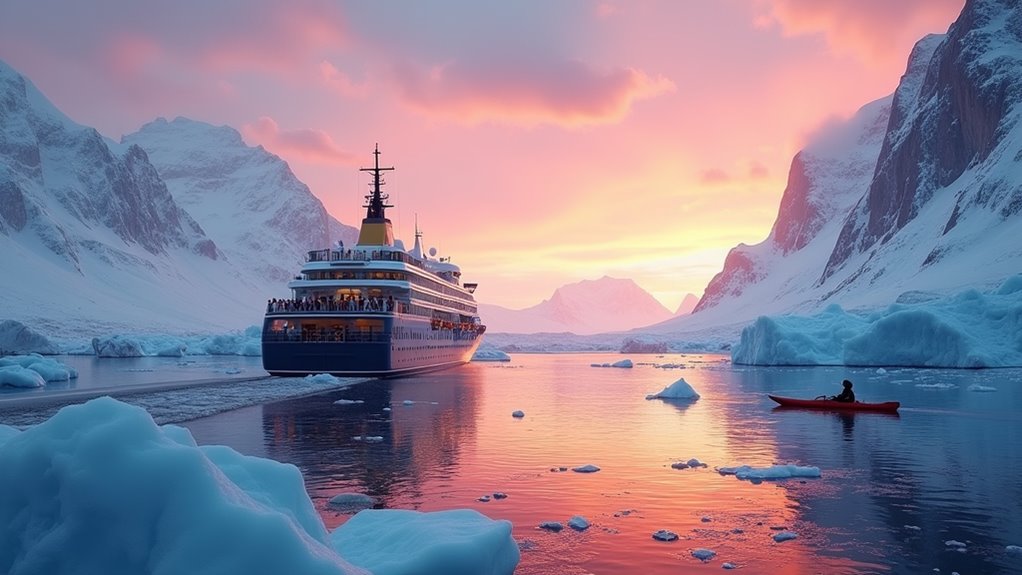
Expedition cruise pricing in 2025 remains high and varies considerably based on destination, trip length, and cabin type. Expect to pay around £7,300 (about USD $9,000) for typical trips, with Antarctica-focused voyages starting from roughly USD $22,000 for budget options and mid-range fares between $25,000–$35,000. Premium polar expeditions command even higher prices due to their remoteness and exclusivity. Booking patterns show you’ll want to reserve about nine months in advance to secure better cabins and prices, especially for popular regions like the Arctic and Galapagos. Demand peaks early, often selling out months ahead, driven by limited capacity and high interest. Dynamic pricing models are common, adjusting fares based on booking momentum and remaining availability, encouraging early reservations for the best value. Additionally, understanding pricing trends can help travelers make more informed decisions and plan their expeditions accordingly. Recognizing booking patterns can also assist travelers in securing the most desirable cabins at optimal times, and staying informed about demand fluctuations can be crucial for planning. Monitoring seasonal variations is also beneficial, as demand and prices often fluctuate throughout the year. Moreover, expedition cruise popularity tends to increase as new routes and destinations are announced, influencing pricing and availability.
Fleet Expansions and New Vessel Developments

In 2025, the cruise industry is set to see significant growth with over two dozen new ships, including expedition vessels, scheduled to launch across multiple lines. This expansion boosts capacity and introduces innovative designs focused on sustainability and passenger comfort. You can expect:
- Sixteen new ships will be delivered, ranging from mega-ships and luxury yachts to specialized expedition vessels, adding over 40,000 lower berths globally.
- New itineraries will target emerging destinations like Southwest, West, and East Africa, along with polar regions and warm-water spots such as the Seychelles and Pacific Islands.
- Technological advancements will enhance efficiency, eco-friendliness, and onboard luxury, ensuring a more sustainable and comfortable expedition experience for travelers.
Industry Challenges and Sustainability Initiatives
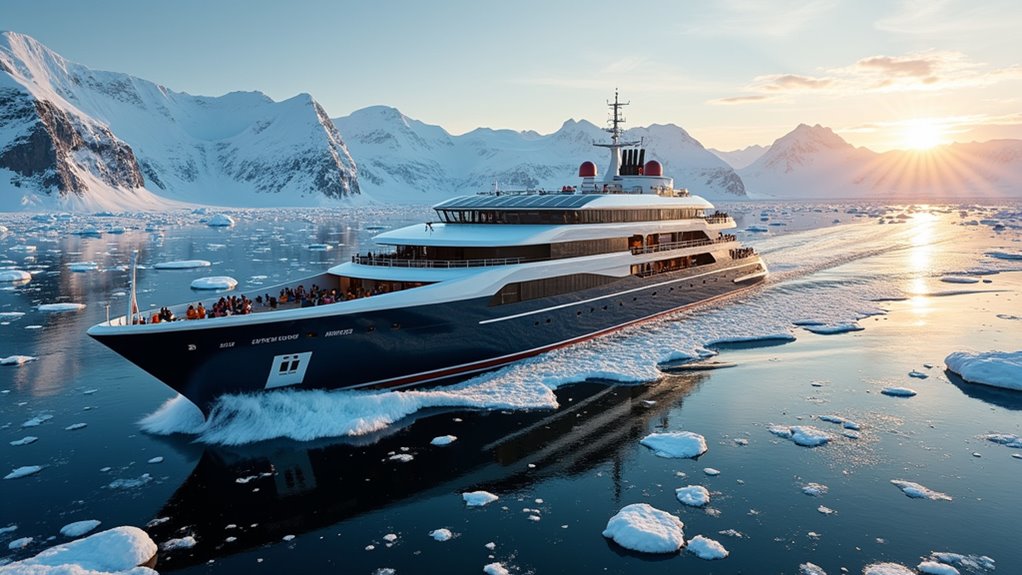
As regulations tighten around environmentally sensitive areas, you’ll need to navigate increased compliance costs and operational limits, especially in polar regions. Managing expedition teams and ensuring passenger safety amid harsh conditions also presents ongoing challenges. To stay ahead, cruise lines are investing in green innovations like alternative fuels and waste management technologies that support sustainability efforts. Additionally, adopting sound design techniques can enhance onboard experiences while maintaining eco-friendly standards. Incorporating remote collaboration tools can further streamline operations across diverse teams, ensuring efficient management even in remote locations.
Environmental Regulations Tighten
Environmental regulations are becoming increasingly strict, challenging cruise operators to adapt their practices in sensitive regions like the Arctic and European waters. These rules aim to protect fragile ecosystems and reduce human impact.
Here are key changes you’ll see in 2025:
- Passenger and Shore Access Limits: Regulations restrict guests to 200 in protected Arctic areas and require maintaining at least 150 meters from wildlife, curtailing shore visits to minimize disturbance.
- Stricter Emission Standards: Expansion of Emission Control Areas mandates lower emissions and cleaner fuels, prompting investments in hybrid, battery-powered ships, and greener fuel options.
- Plastic and Waste Restrictions: Bans on single-use plastics and enhanced waste protocols reduce onboard pollution, encouraging reusable items and stricter disposal practices.
These measures reshape expedition cruising, emphasizing sustainability and environmental responsibility.
Polar Operations Risks
Expedition cruise operators face a complex web of risks in polar regions, driven by strict regulatory frameworks, geopolitical tensions, and logistical hurdles. You must navigate evolving international regulations and comply with both federal and territorial oversight, which complicate itinerary planning. Sanctions and geopolitical conflicts, like the Ukraine conflict, can disrupt access to key areas, affecting operational flexibility. In addition, infrastructure limitations in remote polar areas challenge supply chains and safety measures. Rising fuel prices and travel restrictions further increase costs and restrict routes. You’re also tasked with implementing enhanced safety protocols to protect passengers in icy, unpredictable waters. Balancing safety, compliance, and logistical constraints demands constant adaptation, making polar operations one of the industry’s most complex and risk-prone environments.
Green Innovation Drive
The expedition cruise industry is actively pursuing green innovations to reduce its environmental footprint, facing both technological and perceptual challenges along the way. You’ll see a shift toward alternative fuels like liquefied natural gas (LNG), which lowers emissions by up to 20%. New ships incorporate energy-efficient technologies and advanced waste management systems to minimize ecological impact. Eco-friendly vessels, such as those from TUI Cruises, showcase sustainability features that set new standards. Additionally, many cruise lines support carbon offset initiatives, investing in local environmental projects. To keep pace, industry efforts include:
- Developing advanced propulsion and renewable energy integration.
- Publishing ESG reports to track sustainability progress.
- Promoting sustainable practices and eco-conscious consumer engagement.
These initiatives aim to make expedition cruises more eco-friendly without compromising adventure.
Long-term Market Outlook and Future Opportunities
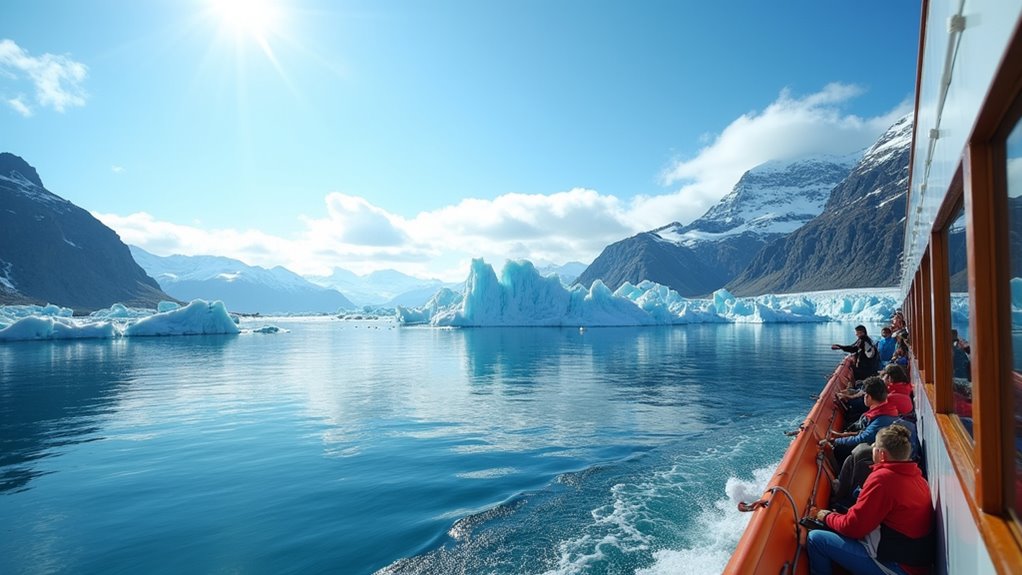
Looking ahead to 2025 and beyond, the expedition cruise market is poised for significant growth driven by increasing consumer interest in immersive, exploration-focused travel experiences. Demand is rising, especially in polar regions like Greenland and the Galapagos, with expanding destinations such as Antarctica and Seychelles. Market forecasts show capacity growth through 2033, supported by new ship deployments and innovative itineraries. Regulatory trends will shape expansion, particularly in sensitive ecosystems.
| Opportunity | Key Focus Areas |
|---|---|
| Polar regions | Accessibility, sustainability |
| Warm-water | Emerging destinations, diversification |
This growth offers opportunities for operators to develop unique experiences, leverage advanced technology, and enhance sustainability efforts, ensuring long-term sector resilience and appeal.
Frequently Asked Questions
How Do Expedition Cruise Safety Protocols Differ From Traditional Cruises?
You’ll notice that expedition cruise safety protocols focus on remote environments, requiring specialized crew training, advanced emergency communication, and onboard medical facilities. In contrast, traditional cruises rely on robust security, lifeboat drills, and advanced navigation systems. Expedition ships prioritize handling emergencies in isolated areas and Zodiac safety, while traditional ships emphasize passenger drills, fire safety, and security systems to guarantee smooth, secure journeys.
What Are the Most Eco-Friendly Technologies Being Implemented in Expedition Ships?
You’ll notice expedition ships adopting eco-friendly tech like LNG fuel, which cuts sulfur emissions considerably. Hybrid propulsion combines batteries with LNG, reducing noise and emissions. Shore power lets ships connect to local grids, eliminating engine use while docked. Air lubrication systems lower fuel use by creating bubbles under the hull. These innovations help you enjoy sustainable travel, protecting marine environments while exploring remote destinations responsibly.
How Are Local Communities Impacted by Increasing Expedition Cruise Traffic?
You’ll see local communities benefiting economically as expedition cruise traffic grows, bringing visitors to less-visited areas and supporting local businesses like tour operators and artisans. This increased activity fosters sustainable development through community partnerships, creating jobs and promoting cultural preservation. However, it’s essential to manage visitor numbers carefully to avoid overwhelming infrastructure and damaging ecosystems, ensuring that tourism remains a positive force for both residents and the environment.
What Health and Safety Measures Are in Place for Remote Polar Expeditions?
You can trust that health and safety are top priorities on remote polar expeditions. You’ll undergo regular health checks, and if you test positive for COVID-19, you’ll wear a mask for five days. The crew provides safety briefings, life jackets, and polar parkas. Emergency plans, communication devices, and collaboration with international rescue teams guarantee you’re protected. These measures aim to keep you safe while respecting the fragile environment you’re exploring.
How Do Expedition Cruise Experiences Cater to Solo Travelers?
You’ll find expedition cruises designed with solo travelers in mind. Many ships offer dedicated solo cabins with no single supplement fees, making it more affordable. You can enjoy private staterooms that still encourage social interaction through group excursions and onboard activities. Smaller ships foster intimate connections, so you can meet like-minded explorers. Plus, early bookings often come with discounts, ensuring you get a fantastic adventure while feeling comfortable and welcomed.
Conclusion
As you plan your 2025 expedition cruise, expect exciting adventures, innovative ships, and sustainable practices shaping the journey. Just like explorers setting sail with a compass in hand, you’ll discover diverse destinations and unforgettable experiences. The industry’s growth, much like the gold rush of yesteryear, promises new opportunities. Stay curious and ready to embrace the future—your adventure awaits, and who knows, maybe you’ll even find your own treasure along the way!
Claire, a creative soul with an unquenchable thirst for storytelling, is an integral part of the Voyager Info team. As a dedicated writer, she weaves captivating narratives that transport readers to enchanting cruise destinations and beyond.
Claire’s love affair with writing began at an early age when she discovered the magic of words and their ability to craft worlds and emotions. Her innate curiosity led her to explore various literary genres, but it was travel writing that truly captured her heart. Drawing inspiration from her own globetrotting adventures and encounters with diverse cultures, Claire embarked on a journey to become a travel writer par excellence.

